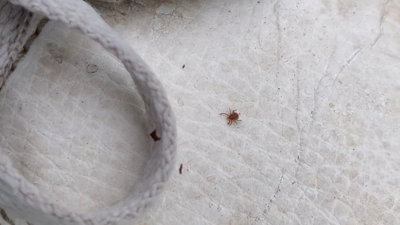DELAWARE - As the weather warms up and more Delawareans head outdoors, state health and environmental officials are urging people to take precautions against ticks.
The Delaware Division of Public Health and DNREC are reminding people to check themselves, their children and their pets for ticks after outdoor activities.
According to the state’s 2024 Vector-Borne Disease Surveillance Report, 344 Lyme disease cases were reported last year, making it the most common tick-related illness in Delaware. Lyme disease symptoms can include fever, fatigue, joint pain and in some cases, neurological issues. The disease is spread by blacklegged ticks, also known as deer ticks, according to the state.
In addition, Alpha-gal Syndrome, a serious allergic reaction to red meat linked to tick bites, was made reportable in Delaware in December 2024. Over 100 AGS cases were reported between June and December 2024. The illness is most commonly linked to bites from the lone star tick, now the most frequently encountered tick species in Delaware.
“Earlier this year, the DNREC Tick Program published a study in the Journal of Medical Entomology detailing each tick species that has been reported in Delaware,” said State Tick Biologist Dr. Ashley Kennedy of the DNREC Mosquito Control Section. “The last such report was published in 1945 and there have been a lot of changes since then – new tick introductions and new tick-borne pathogens discovered. Now we know that Delaware is home to at least 15 different tick species, possibly as many as 19 species. With all these changes, tick awareness year-round is more important than ever.”
Preventing Tick Bites
Health officials recommend several measures to lower the risk of tick encounters:
Wear long sleeves and pants, and tuck pants into socks when hiking or working in grassy or wooded areas. Light-colored clothes help make ticks easier to see.
Stay on the center of trails and avoid walking through tall grass and leaf litter.
Apply insect repellents that contain at least 20 percent DEET, picaridin, or oil of lemon eucalyptus to skin and clothing. Always follow the product label instructions.
After being outside, check your entire body, especially warm areas like underarms, behind knees, and around the groin. Check pets thoroughly.
Keep grass mowed, clear out leaf piles, and use gravel or wood chips between lawns and wooded areas to create tick barriers.
What To Do
If a tick is found on the skin, officials say to remove it promptly. After removal, wash the area and your hands with soap and water or use rubbing alcohol.
Do not crush the tick with your fingers. Instead, flush it down the toilet or seal it in a container says the state. For medical purposes, you may save the tick in rubbing alcohol or a zip-seal bag, and take a photo of it to upload online.
People who experience a fever, rash or flu-like symptoms within 30 days of a tick bite should contact a health care provider.







